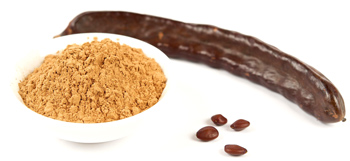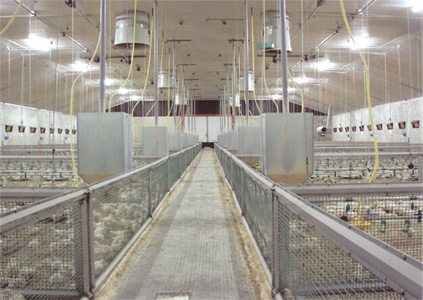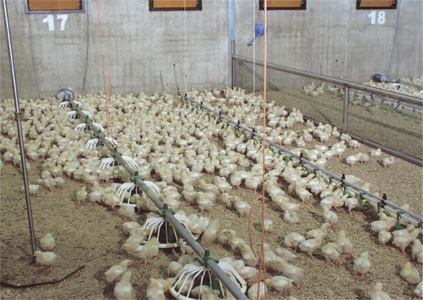Schothorst Feed Research Study of the effect Carob-A on bird's litter
Carob pod meal to enhance litter quality
Wet litter, a common problem in poultry production, is often caused by an imbalance in the intestinal micro flora. Trials show that carob pod powder has intestinal stimulating properties and improves the litter quality.
By Bert Veldman, PhD, Schothorst Feed Research, Lelystad, The Netherlands.

The carob or St. John’s Bread tree (Ceratonia siliqua) is an evergreen, leguminous tree up to 15 m and is widely cultivated in regions which have an extended dry season, like the Mediterranean. Its seeds have been utilized by various industries such as the cosmetic, pharmaceutical and food industries. The pods, which compromise 90% of the weight of the fruit, are mainly used as an ingredient in animal feed. Nutritionally, carob pod powder has little value. However a roasted and micronised carob powder, called Carob-A, developed and marketed by Euroduna Group in Europe, contains a relatively high amount of carbohydrates and condensed tannins. These components are believed to have intestinal health stimulating properties. In the past the carob pod has been used as a diarrhoea therapy. More recently the Pasteur Institute in Bucharest demonstrated that Carob-A has anti-infectious properties in weaning piglets.
Importance of litter quality
The control of litter quality, which implies primarily the moisture content, is a priority in modern poultry production in order to reduce productivity losses and avoid environmental and animal welfare problems. In practice problems with litter quality are often related to a limited choice of antimicrobial growth promoters (which raises the risk of increased bacterial growth) and the ban on the use of meat and bone meal in poultry diets. To a certain extent nutritional factors can modify the quality of poultry litter, primarily by affecting water consumption and excretion. Because of the possible intestinal health stimulating properties, the effectiveness of Carob-A in broiler diets on litter quality and broiler performance was studied at Schothorst Feed Research in Lelystad, The Netherlands.
Practical approach

Schothorst Feed Research has a poultry house with a capacity of 32,000 broiler chickens, which is divided into 32 experimental units of 1,000 birds each. This facility provides the opportunity to carry out research under conditions that correspond to a real-life situation. Therefore the outcome of research done here can be translated easily to broiler production in practice.
Researchers tested Carob-A on 32,000 male and female Ross 308 broilers from day one to slaughter at 38 days. The trial consisted of four treatments with eight replicates of 1,000 birds. The treatments included a control (standard) feed without anti-microbial growth promoter, a control feed with the addition of 1% and 2% Carob-A respectively and a feed with 2% Carob-A corrected for nutrient dilution by carob powder. During the experiment feed and water intake as well as bird weight were recorded electronically every day until the slaughter age of 38 days by means of automatic weighing plateaus and an automatic feeding and watering system. Five experienced persons visually evaluated litter quality on day 13 and 20 of the bird’s age and at day 38 birds were weighed individually by hand.
The results

Results show that from day one to day 31, 1% Carob-A in feed had a better – but not significant – growth of broilers and a significantly lower water/feed ratio compared with the control diet (Table 1). A 2% addition proved to be unfavourable compared with the control but this was rectified when the diet was corrected for nutrients. In the finisher period, 31-38 days, the favourable effects of carob disappeared. During the starter and grower period the visually scored litter quality was significantly better at day 20 for all treatment groups. The improvement was already noticeable at day 13.
Because of the positive effect on litter quality, it certainly makes it worthwhile considering the use of carob powder in laying hens as well, since dirty eggs and manure quality are important issues for many egg producers.
